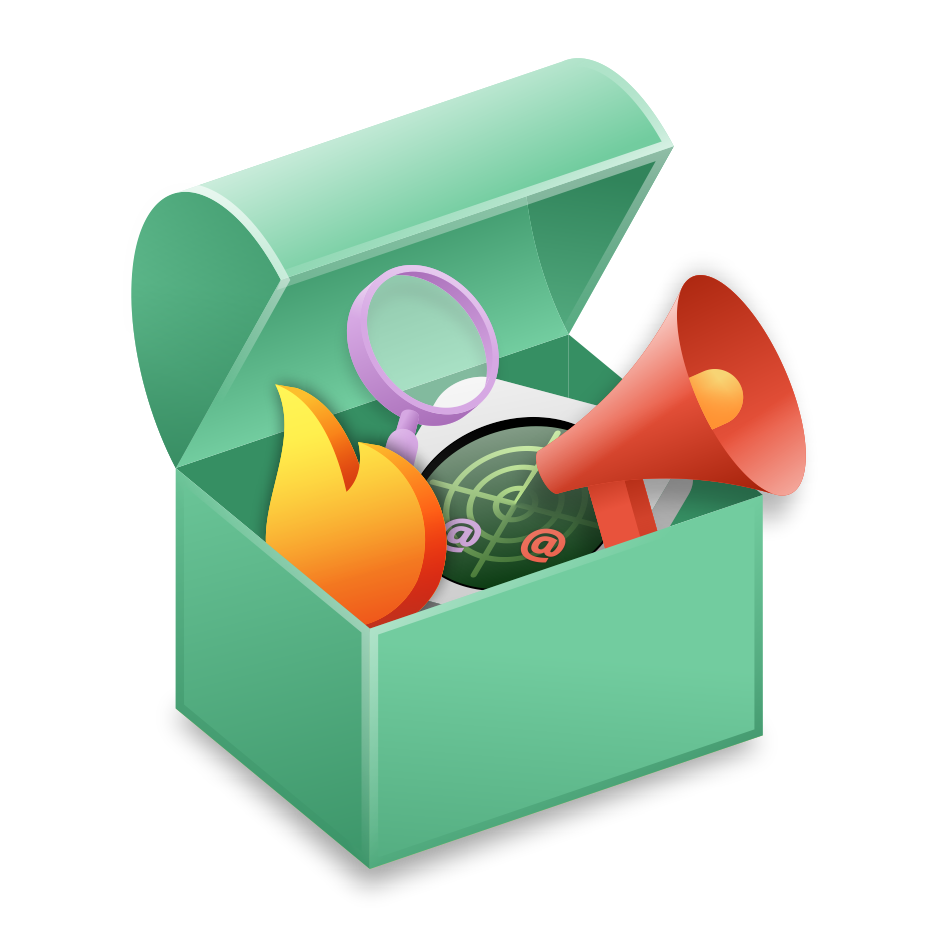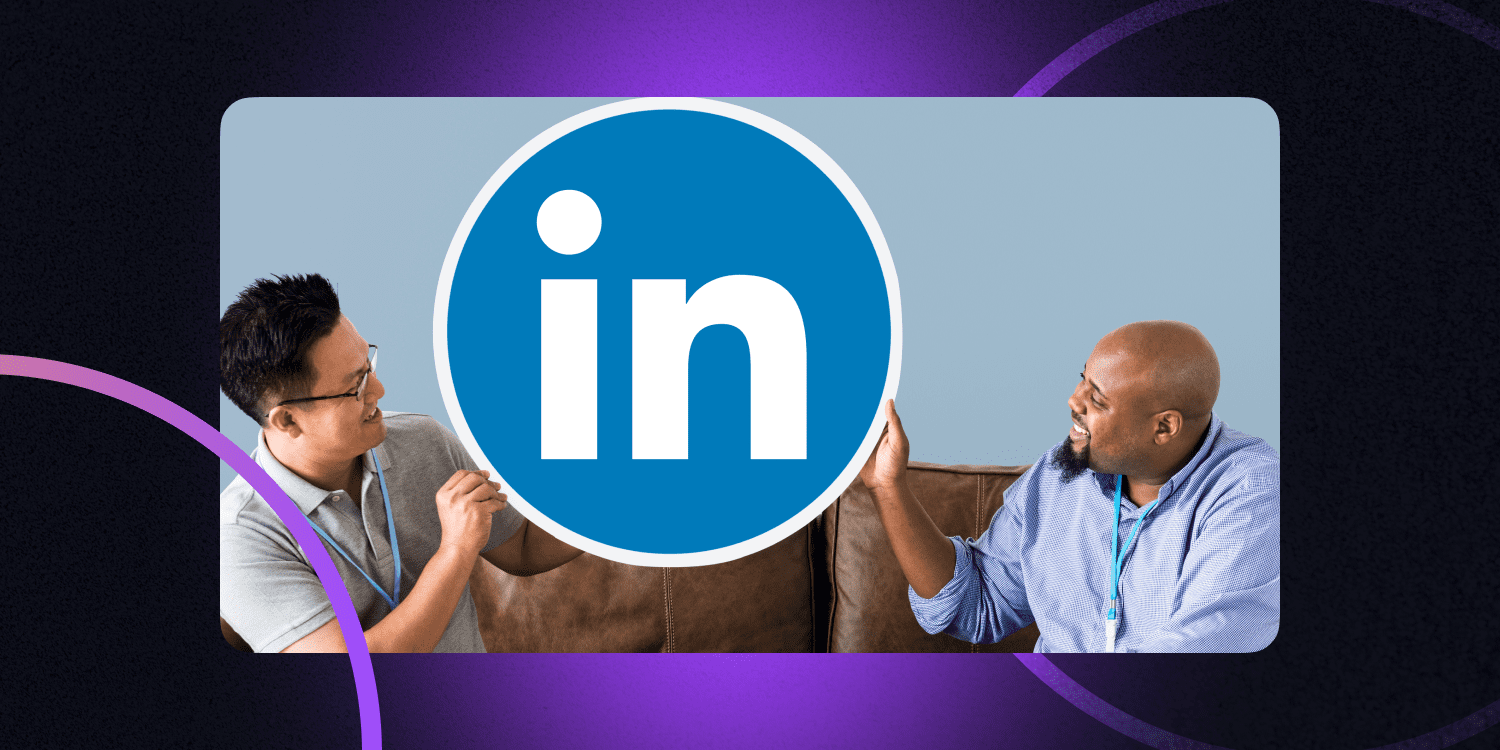Have you ever wondered why some LinkedIn cold messages get replies while others are left on read? With an impressive average response rate of 85%, LinkedIn cold messaging can be incredibly effective, but it has to be approached smartly.
Cold outreach isn’t just about sending sales and marketing messages to every profile that pops up. A too-aggressive pitch lacking personalization can scare off people and make a bad first impression.
Before starting the cold outreach on LinkedIn, there are choices to make, profiles to polish, and templates to craft (or use the ones we’ve prepared for you in this post). We’re here to help you finetune your LinkedIn cold messages and turn the cold leads into your product users and lovers.
Outline
What is LinkedIn outreach?
Cold LinkedIn outreach entails finding and connecting with prospects and thought leaders in your field by sending personalized invitation requests and messages. This method is typically used for lead generation, networking, and business development on LinkedIn.
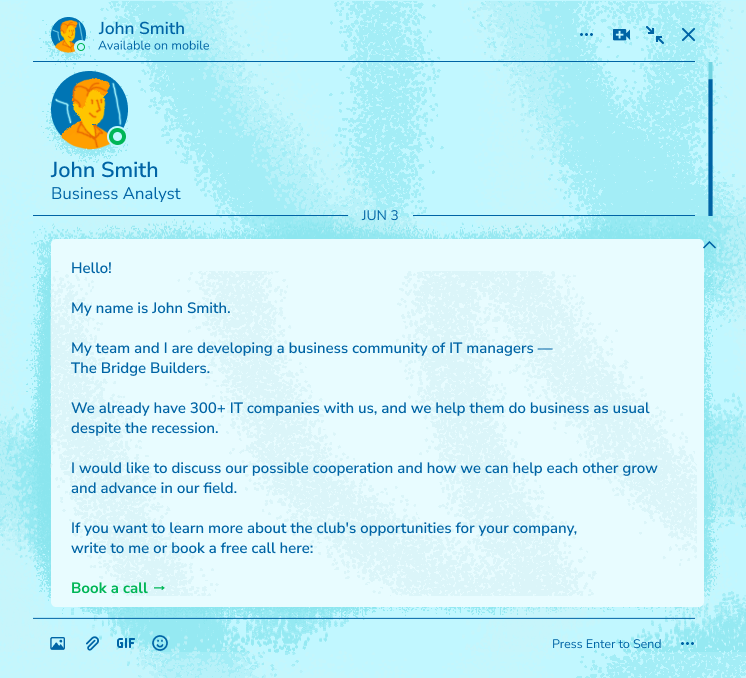
However, it also works for reaching out to recruiters or potential employers who can help you build your career. Just imagine sending a direct message to a hiring manager at your dream company and receiving a job opportunity directly from the source. That’s the power of LinkedIn outreach!
Connecting with someone in your industry or any desired field can expand your professional network, increase your visibility on the platform, and discover new opportunities. But before you get all these robust benefits, you should learn how to cold message someone on LinkedIn.
|
→ In this article, we will discuss the ins and outs of cold messages on the platform. If you want to learn more about how to send connection requests that get accepted, download our free guide. |
What is the best way to cold message on LinkedIn?
You can try the following methods for your cold outreach:
- Start to cold message on LinkedIn for free
- Use InMail, the LinkedIn Premium feature.
- Find leads on LinkedIn and switch to an email automation tool.
Each option has its own set of advantages and drawbacks. Let’s explore them.
1. Start to cold message on LinkedIn for free
This solution doesn’t require any additional resources. All you need to do is send a personalized connection request to your prospect and wait for them to accept it.
Pros:
- Cost-effectiveness: You don’t need to purchase a LinkedIn subscription to start. Simply use a free account to send your message to prospects.
- Authentic engagement: In this case, your communication starts with an invitation request. If potential leads accept your connection, they already have some interest in your service, industry, etc.
Cons:
- Limited reach: You can only send messages to people in your network, which might limit your cold outreach potential.
- No advanced features: The free version lacks the sophisticated tools and analytics that can help refine your strategy and increase your response rate.
2. Use InMail, the LinkedIn Premium feature
Try this option if you want to take it up a notch and are ready to allocate resources for cold messaging.
Pros:
- Wider reach: With InMail, you can directly contact anyone on LinkedIn, even those not in your network, significantly expanding your cold LinkedIn outreach efforts.
- Higher visibility: Messages sent via InMail often have priority in recipients’ inboxes, increasing the chances that yours will be noticed.
Cons:
- Cost: This is a Premium feature. Upgrading to a paid plan involves some investment, which might not be acceptable for some, especially those just starting.
- Risk of being unnoticed: Just because you can contact anyone doesn’t guarantee a response. Plus, people can opt out from receiving InMails in their message preferences settings.

Is LinkedIn Premium Worth It? An In-depth Analysis
December 2 2025
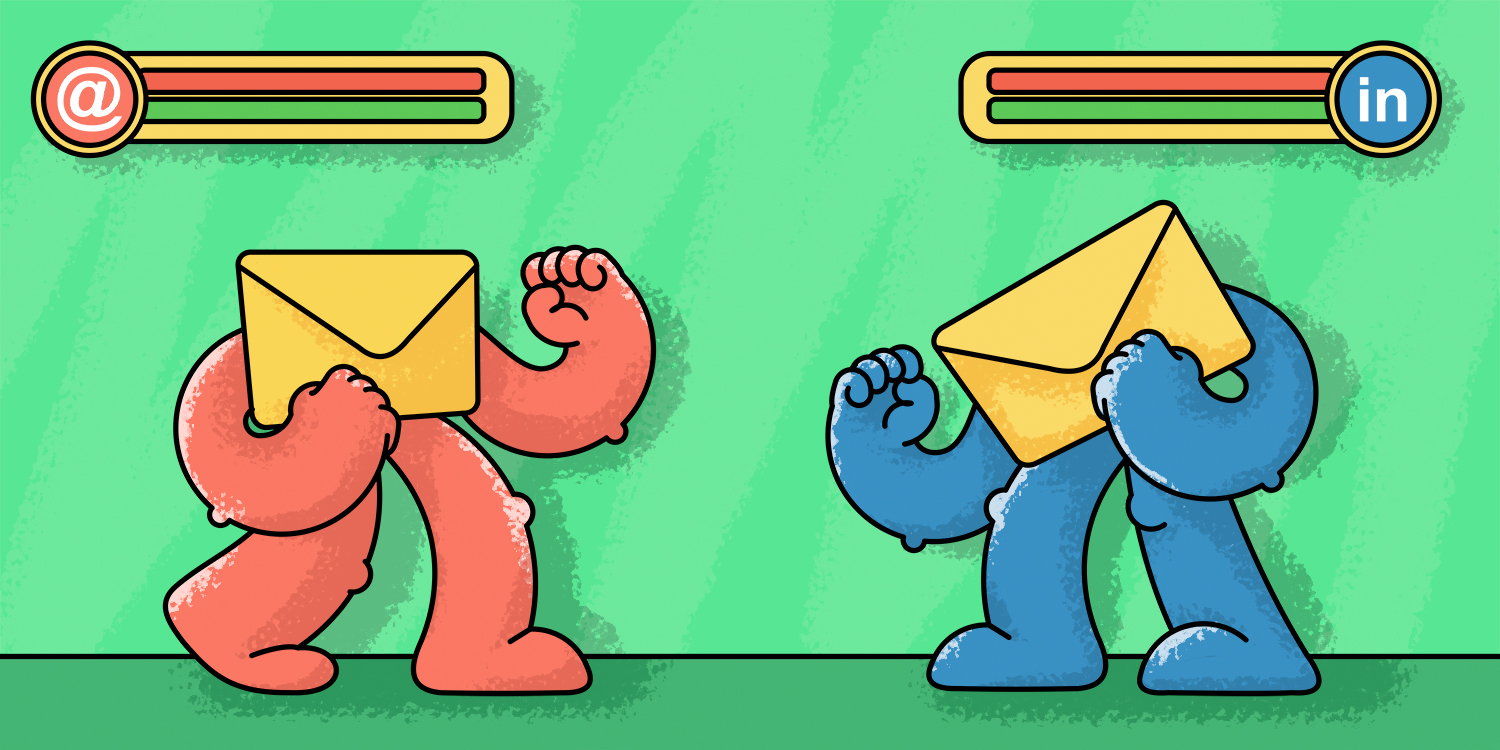
LinkedIn InMail Vs. Email: What Channel Is Better For Your Outreach
November 26 2025
3. Find leads on LinkedIn and switch to an email automation tool
We firmly believe that this is the best way to scale lead generation and achieve significant results in a shorter period of time.
Pros:
- Expanded prospecting: You can find leads and their email addresses on the platform to further cold email LinkedIn users in bulk.
- Multichannel outreach: LinkedIn limits the number of connection requests and messages you can send. If your sales or marketing teams want to generate leads in bulk, this might become a real problem. However, you can bypass these limits if you cold message LinkedIn users using an email automation solution.
For example, with the Snov.io LI Prospect Finder extension, you can collect pre-verified email contacts in seconds.
With this handy tool, you can gather email addresses from search results pages, personal profiles, company employee lists, and event attendee lists in LinkedIn groups.
Let’s say you want to create a prospect list of people who work as product designers in the United States.
Download and install the extension. Go to LinkedIn, enter the keywords in the search bar, and press Enter. Then, apply any filters you need, and click on the LI Prospect Finder icon in your extension folder (we recommend pinning it to have easy access whenever needed).
Click the Save button to move the contact list to Snov.io CRM.
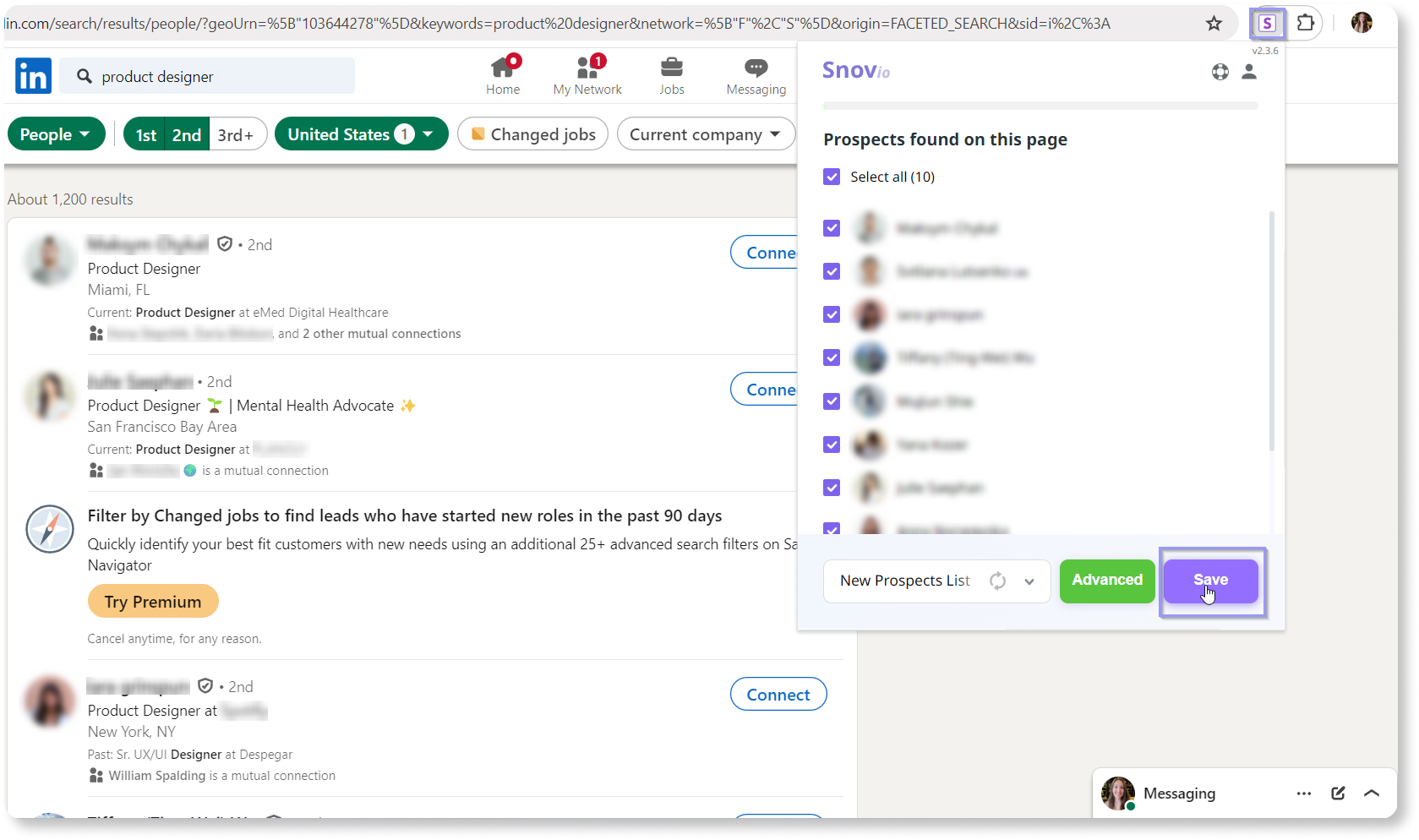
The next step is to launch a multichannel drip campaign, adding automated actions like LinkedIn visits, post likes, connection requests, personalized messages, and InMails.
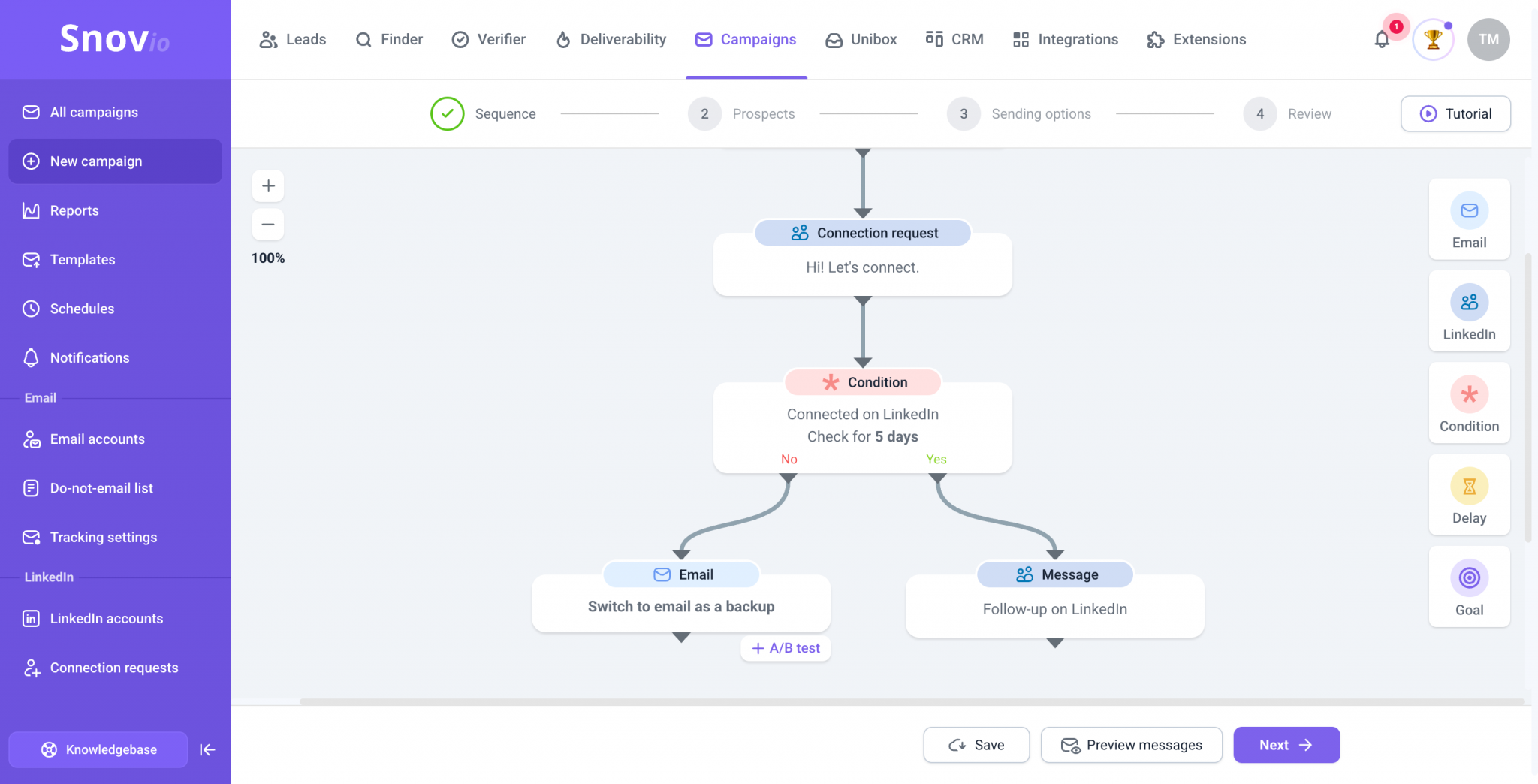
You can modify campaigns to your liking by switching conditions, Spintax variables, and automated actions. The tool lets you filter your outreach based on the connection degree, so you can make your campaigns more relevant and targeted.
You can also keep track of needed metrics and manage your leads in our CRM to improve your performance over time.
The method for cold messaging on LinkedIn depends on your strategy, budget, and goals.
How to cold message on LinkedIn: a detailed guide
In this chapter, we’ll focus on each stage of building your cold outreach on LinkedIn.
Checklist for a successful cold messaging campaign:
- Polish your account
- Develop a cold message strategy
- Create an ideal customer profile
- Use LinkedIn filters to find relevant people
- Create a prospect database
- Research each prospect
- Write a personalized cold LinkedIn message
- Follow up
- Measure & analyze your cold outreach
1. Polish your account
If you want your connection requests accepted, take a look at your LinkedIn page. Does it look professional and align with your product or company? After all, this is your first impression in the networking space.
→ Refine your LinkedIn profile with the help of our comprehensive guide.
2. Develop a cold message strategy
If you are wondering how to write a cold message on LinkedIn, we recommend preparing some templates and personalizing them for each lead.
You can find our suggestions below.
3. Create an ideal customer profile
The ICP characterizes the perfect client whose needs and characteristics mesh seamlessly with your product offering.
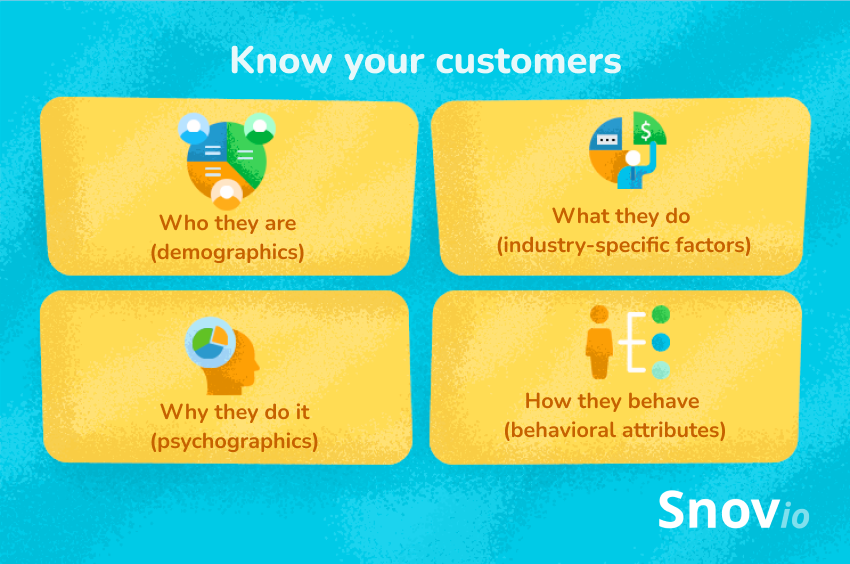
Crafting ICP helps you focus only on those people who are more likely to stick around for the long haul.

4. Use LinkedIn filters to find relevant people
Think back to when you found just the right person who could help move your product forward. Just like using a map to find the best route to your destination, LinkedIn’s filters allow you to search through millions of profiles to find your perfect lead.
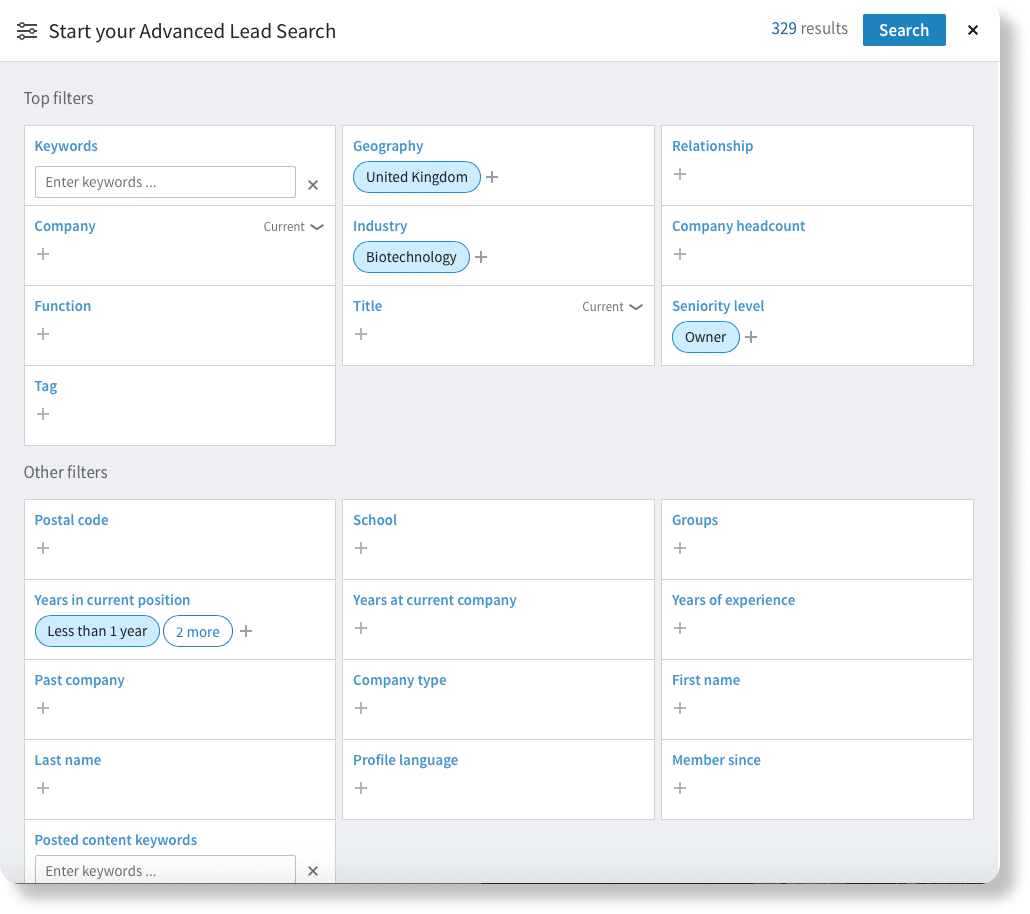
Tips for effective search on LinkedIn:
- Set your goal
Are you looking to expand your professional network? Or maybe you want to generate more leads for your new product? Define your objectives.
- Implement precise keywords
Think of job roles, skills, or experience. Anything that is relevant to your target audience.
- Combine filters
For example, you can narrow your search by looking for “Marketing specialists” in “California.”
LinkedIn lets you combine search terms with the words AND, OR, NOT to make the results more precise. For example, “Marketing specialists AND California.”
5. Create a prospect database
You wouldn’t organize an event without a guest list, right? The same thing goes for organizing an effective cold outreach campaign.
Your marketing or sales team can begin by gathering all potential contacts into a spreadsheet. Include columns for their name, company, position, geographic location, and mutual connections or interests. This will help you personalize each cold message.
But if you, like us, think spreadsheets are a bit outdated, you can modernize your approach with the help of the sales CRM ecosystem built by Snov.io.
6. Research each prospect
The rule is unbreakable: the more you know about your potential clients, the more engaging the cold message you send them.
Take a look at their LinkedIn profiles to learn more about their company, product, current role, and skills. What have they posted lately? Have they shared an insightful article, commented on industry news, or celebrated a new job, promotion, or another professional milestone? Each piece of information adds layers to your understanding of who they are and what matters to them.
Then, explore the company’s profile on LinkedIn and check out the website. Mentioning any details regarding their field, work, or experience in your cold messages will increase your chances of getting a response.
7. Write a personalized cold LinkedIn message
Continuing the previous point, we want to highlight the importance of personalization. To establish a mutual connection on LinkedIn,
The key rule of how to cold message on LinkedIn like a pro is personalization. Remember the last time someone sent you a message that caught your attention because it was tailored just for you? That’s how personalization works. Use what you’ve learned from your lead research to craft an engaging LinkedIn cold message.

8. Follow up
Don’t be discouraged if you don’t get a reply right away—this is an integral part of cold LinkedIn outreach. A gentle follow-up can remind your prospect about the cold message you’ve initially sent. Here are some handy tips on how to do it the best way:
- Wait about a week after the cold message you’ve sent initially. This period respects the recipient’s time to digest and write back a response.
- If they haven’t responded, send your first follow-up and wait for one week.
- If the first follow-up doesn’t get a reply, try once or twice more, spacing each additional message by another week.
- Make sure your follow-up messages provides additional value—offer new information that could benefit the recipient.
- If a connection request goes unnoticed, try InMail (but remember that you should have a LinkedIn premium account).
- Consider a multi-channel follow-up strategy if your connection requests and InMails go unnoticed. For example, you can switch to the cold outreach scenario via email.
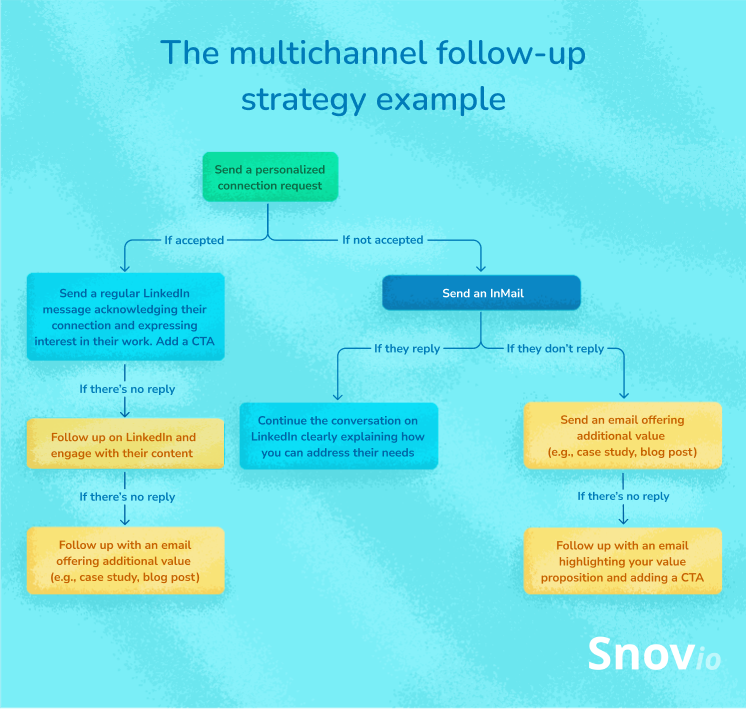
We recommend using the Snov.io LinkedIn Automation Tool for maximum results.
9. Measure & analyze your data
If you’re using Sales Navigator, you’re in luck because it embeds a tracking mechanism. But if you’re working with a basic LinkedIn account, you’ll need to roll up your sleeves. Pick the most important metrics to understand your campaign’s effectiveness and track the data manually or with a CRM.
Here are some key metrics to keep an eye on:
✔️ The number of cold outreach invitations sent
✔️ The number of invitations approved
✔️ Response rate
✔️ The number of negative responses
✔️ The number of positive responses (plus analyze what’s working)
✔️ The number of non-committal responses
✔️ The number of leads that have moved to the next step.
Tracking these metrics will give you a solid overview of LinkedIn outreach and will help you adjust and improve your approach.
The secrets of the LinkedIn cold message: best practices, templates & examples
Busy decision-makers often have overflowing inboxes and limited time—so how can you ensure they pause to read your LinkedIn cold message? Here’s what we recommend.
Proven techniques for cold outreach on LinkedIn:
- Leverage something you have in common
- Don’t be too salesy
- Mention a shared connection
- See if a mutual connection can introduce you
- Offer next steps
Leverage something you have in common
Starting on common ground, whether it’s a shared industry, hobby, or educational background, can make your direct message more relatable and engaging.
Well, ‘common ground’ can be anything, just like in this post:
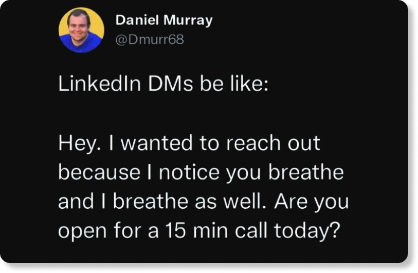
So, here’s a LinkedIn message template that can help you start a conversation based on common ground:
|
Hi [Name], I noticed we both share a passion for [Industry/Interest]. I’m really impressed by your work with [Company/Project], especially your insights on [specific detail]. It’d be great to exchange ideas. Can we connect? |
Don’t be too salesy
Nobody likes to feel like just another item on a sales checklist. So, take your time before adding a sales pitch to your LinkedIn cold message. Instead, frame it as a casual conversation.
The template below is designed to initiate a conversation that focuses on building a connection based on mutual interests rather than making an immediate sales offer. It conveys genuine interest in the person and their work.
|
Hi [Name], My name is [Your Name], and I’m a [Your Role] at [Your Company]. At [Your Company], we help businesses overcome challenges related to [your area of expertise]. In our experience, [brief solution tip about the group discussion]. I’d be happy to connect and discuss your specific situation in more detail if you’re interested. Best regards, |
Mention a shared connection
A mutual connection on LinkedIn can serve as a credible reference and increase your message’s chances of getting a positive response.
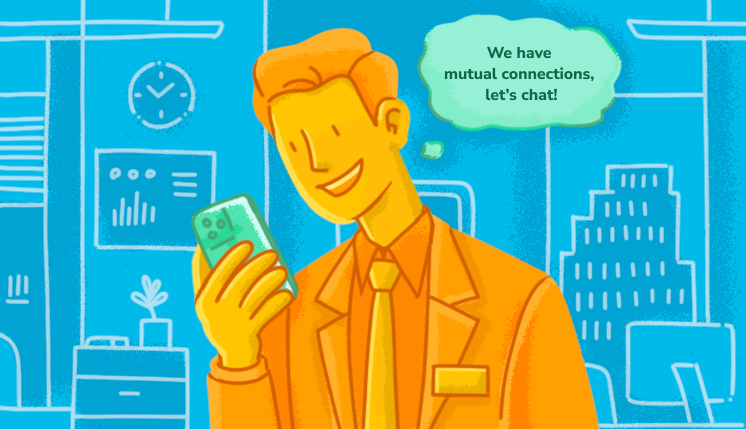
It’s a great way to introduce yourself through a familiar name, adding a layer of trust and relevance.
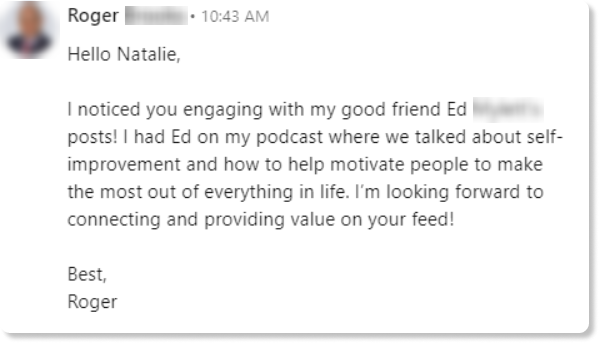
And here is a template you can use for your LinkedIn cold message:
|
Hello [Name], I see we’re both connected to [Mutual connection]. Having worked with [Him/Her/Them] on [Project], I’ve heard great things about your role in [Industry/Project]. I’d love to connect and discuss how we can drive mutual value to develop in our field. Looking forward to hearing from you, |
See if a mutual connection can introduce you
People are more likely to trust recommendations from colleagues, friends, or acquaintances. Referrals come pre-qualified because the referrer trusts you and believes your service or product would be a good fit for the person they’re recommending you to. This can lead to better client matches and higher conversion rates.
These delicate approaches enhance your messages’ relevance and demonstrate your professionalism and networking ethics.
Grab the following LinkedIn cold message template to ask a mutual contact for an introduction:
|
Hi [Mutual connection], I noticed you’re connected with [Name]. If it’s not too much trouble, could you introduce me to [him/her/them]? I have some ideas in [Area] that I think would be of mutual interest, and I’d be happy to discuss them. Thanks! |
Offer next steps
Add a clear call to action to your cold LinkedIn message to guide the conversation forward and encourage engagement. This will move your contact to a desired outcome, such as scheduling a call, arranging a meeting, or providing additional resources.
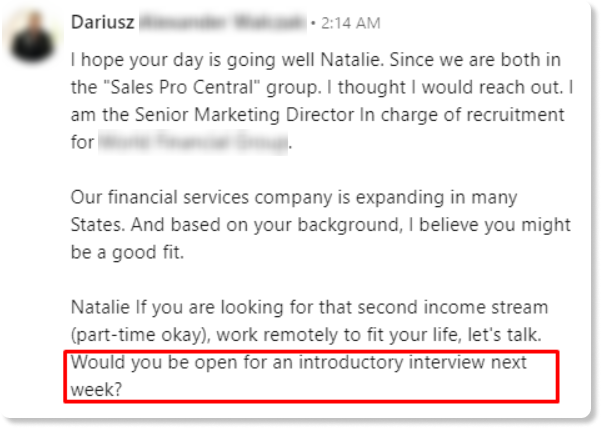
Here’s a template that illustrates how to offer next steps effectively:
|
Hi [Name], I hope this message finds you well! Thank you for connecting with me on LinkedIn. I enjoyed browsing your profile and learning more about your expertise in [Mention relevant area]. I’m particularly interested in discussing [Specific topic or opportunity]. Would you be available for a quick call next week to explore potential collaboration opportunities further? Please let me know a time that works best for you, or feel free to suggest an alternative method of communication if that’s more convenient. Looking forward to hearing from you! Best regards, |
Using these LinkedIn cold message templates helps you avoid the hassle of drafting new messages for each prospect. It will also save you time and keep your marketing or sales team on the same page. Just stick to a unified style that represents you and your product well.

How To Write A Cold Email To A Potential Client To Get More Leads
November 26 2025

LinkedIn Sales Prospecting: Techniques, Use Cases, New Method Tested
November 26 2025
So, here’s a short checklist on how to cold message on LinkedIn:
✅ Start with a personalized greeting using the recipient’s name. Avoid generic salutations like “Dear User” to make a pleasant first impression.
✅ Introduce yourself briefly. Mention your name, role, and any mutual connections or common ground. This will help you build a connection.
✅ Clearly articulate the reason for your message. Whether it’s seeking advice, proposing a collaboration, or introducing a product, be concise and specific.
✅ Explain what value you can offer them. It could be a relevant insight, a potential opportunity, or a mutual interest. This makes the message more worthwhile for the recipient. But don’t add a sales offer to avoid being too pushy and straightforward.
✅ End with a clear and straightforward call to action (CTA): ask for acceptance of a connection request or a specific response, such as booking a demo, a short meeting, or time to call.
More handy templates for the LinkedIn cold outreach message
LinkedIn cold outreach isn’t just for social selling. Let’s remember that the professional platform was once created for job seekers and recruiters.
Whether you’re reaching out to land a job, connect with a hiring manager or a recruiter, ask for a referral, or get an internship, having the right template can make all the difference. Here are some examples for each of these scenarios:
How to cold message on LinkedIn for job applications
To increase your chances of landing a job, you can contact people who work there and demonstrate your initiative and interest in this role.
Here’s what you can do:
- Start by thoroughly researching the company and position to include relevant details in your message.
- Identify the right person to contact, such as the hiring manager or recruiter.
- Express your interest to the employer.
- Personalize your message and highlight the skills and experience pertinent to the job post.
- Include a clear call to action, like requesting a meeting or call or link to your CV.
Here is a template you can use:
|
Hello [HR Manager’s Name], My name is [Your Name]. As a [your primary role] with a proven record of [relevant experience], I’ve always admired [Company’s] innovative approach. I believe my expertise in [specific skill or achievement] can benefit [Company] and would be a valuable asset for [a particular area where your skills would add value]. Please let me know a time that works best for you, or feel free to suggest an alternative method of communication if that’s more convenient. Let’s discuss potential opportunities for collaboration in a short call or meeting. Looking forward to hearing from you, |
If you wonder how to cold message recruiters on LinkedIn effectively, feel free to use the following template:
|
Hi [Recruiter’s Name], I’m [Your Name], an experienced [Your Job Title/Field] with a passion for [specific skills or industries]. I’m particularly drawn to [Company Name]‘s focus on [mention something specific about the company’s mission or values]. I’m eager to bring my experience in [mention your specific skills or experiences] to [Company]. You can find my resume here [include a link]. Could we schedule a time to discuss a possible collaboration? Thank you for considering my application, |
How to cold message on LinkedIn for an internship request
By reaching out directly, you get your name and qualifications to the right people and show your initiative and proactiveness, qualities that employers value.
Here’s what we recommend:
- Briefly introduce yourself, highlighting your academic background, relevant skills, and any pertinent experience.
- Explain why you’re interested in the company and the specific internship opportunity.
- Express your enthusiasm for the internship and how it aligns with your career goals.
- Politely inquire about available internship opportunities.
- Include a call to action, such as requesting a meeting or additional information.
The template below may come in handy:
|
Dear [Hiring Manager’s Name], My name is [Your Name] and I’m a [your year] student at [your university] majoring in [your major] with a strong interest in [relevant field]. I am deeply impressed by [Company’s] innovation in [Industry] and want to express my interest in the [specific position]. With a solid track record in [related field or skill], I am enthusiastic about the opportunity to contribute to your team. Let’s connect and discuss internship opportunities at [company name] in more detail. Would you be open to a brief chat about how my skills can benefit your project? Kind regards, |
How to cold message on LinkedIn for a referral request
A referral from a trusted connection can considerably increase your chances of getting noticed by the hiring manager. To write a compelling cold message, follow these steps:
- Identify a company that can refer you;
- Personalize your message by mentioning a shared connection or common interest;
- Clearly state your purpose for contacting them. Be upfront about seeking a referral for a specific job opportunity. Provide a link to the job posting or your resume.
- Highlight the skills and experience relevant to the job you’re applying for. Keep it concise.
- Instead of directly requesting a referral, express your interest in learning more and getting their support.
Here is a template you can use for this purpose:
|
Hi [Name], My name is [Your Name]. Your experience at [Company Name] has caught my eye, and I noticed we both share an interest in [Industry Topic]. I’m currently a [Your Title] at [Your Company] with [X years] of experience in [Your Industry]. I’m particularly interested in the [Job Title] position that recently opened at [Company Name] as my skills in [relevant skill 1] and [relevant skill 2] align well with the requirements. I’d be grateful if you could share any insights about [Company Name] or the [Job Title] role. Could you recommend someone at the company who might be a good resource? Thank you in advance, |
Keep all your cold message templates in one document to make your LinkedIn outreach more efficient. Or, if you’re using LinkedIn’s paid plan, you can create up to 500 templates right within your account.
Bottom line
Making each contact count with precision and personalization is a true mastery of cold outreach on LinkedIn. It is essential for anyone in sales, recruitment, and beyond. With the right approach, you can turn LinkedIn cold messaging into a potent strategy for generating leads and building valuable professional relationships.
And remember, LinkedIn automation tools can significantly streamline this process and ensure that your efforts pay off.


